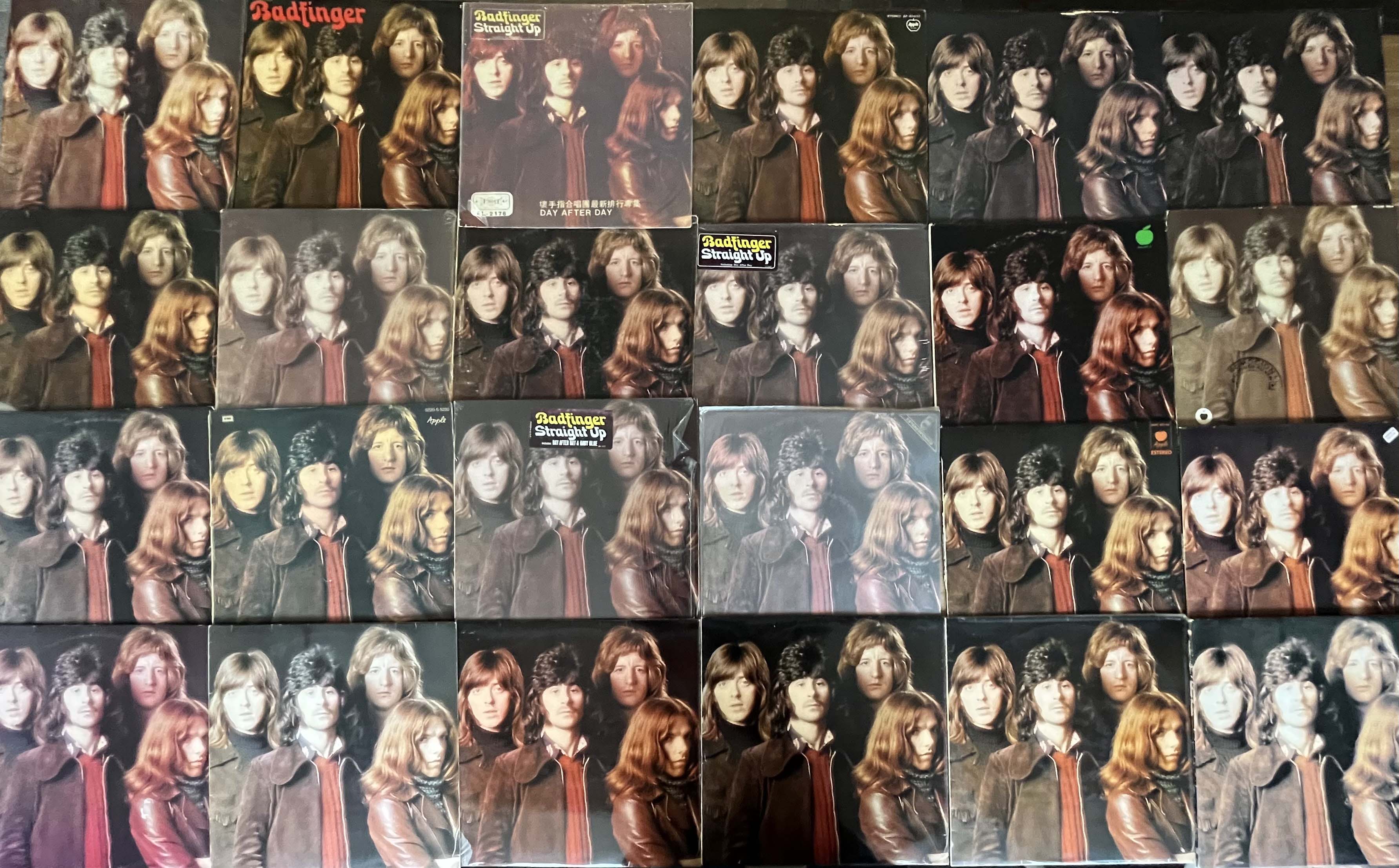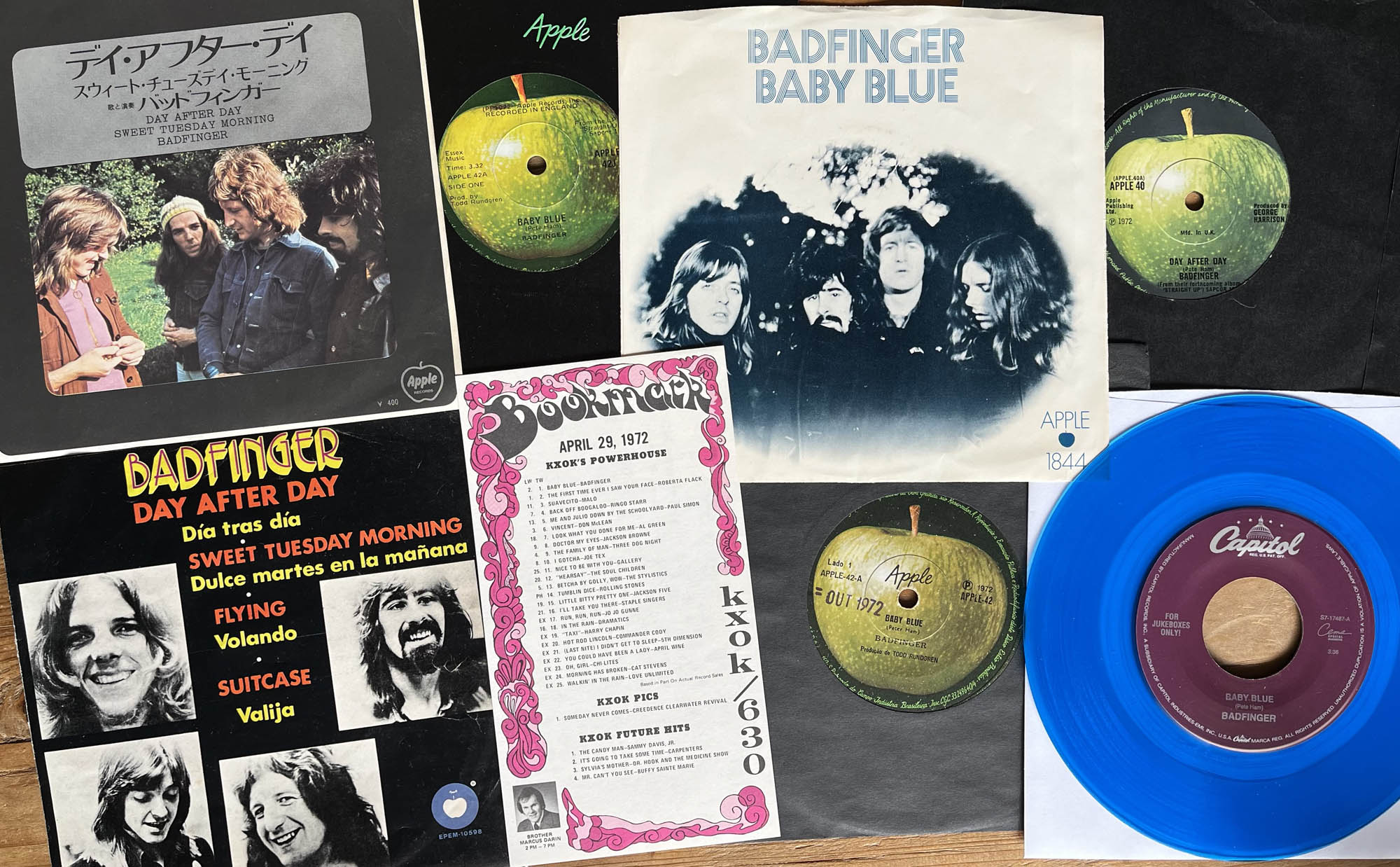
The Beastie Boys and Me
Published on Dec 10, 2025
The Doors and Me
Published on Dec 8, 2025
Hold the Line: a breakup story starring Toto
Published on Dec 3, 2025
Letter From the Publisher
Published on Nov 29, 2025
More Liner Notes…
Featured Essay: The Special Love I Have for You: Discovering Badfinger’s Straight Up
by Bill Zuka

Would you lend a highly sought-after album to someone whose last name you didn’t know, had no clue where they lived, and might possibly never see again? That is how I was introduced to my all-time favorite album.
From before I started kindergarten, all I wanted to do was hang out in record stores or the next best thing: a department or discount store record section. My biggest summertime thrills were stumbling upon garage sales with stacks of 45s for a dime apiece. Three of my biggest childhood disappointments came from the closure of record stores at Village Square, a 1960s-era outdoor mall half a mile from my home in 1976, 1980, and 1983.
My favorite album is Straight Up by Badfinger. It’s an album I first tried to buy when I was 12 in 1981, even though I didn’t know the name of the album nor any song other than the hit single “Day After Day.” I would not even know what it looked like until Scott, the future manager of Music Vision, loaned me his copy hours before the store closed for good.
In 1978, the 52-hour radio special “The History of Rock and Roll” aired, and I was captivated. Three years later, I heard “Day After Day” on the show update, and immediately went to Music Vision in Village Square to look for the album. I knew they carried four Badfinger titles in the cut-out bins: Magic Christian Music, No Dice, Ass, and the self-titled Badfinger. All but the last were on Apple Records. Not seeing “Day After Day” on any of these albums, I asked the manager if he knew which album had the song. He did not, and for a while my search ended there.
In the fall of 1983, I was a freshman in high school wearing the clothes my older brother wore when he entered the same school in 1976. My flared-collar button-ups and bell-bottom corduroys could not compete with the polos and khaki chinos most of the other kids were wearing. I was fine. I knew I’d be happy after school hanging out at Music Vision.
One morning on the way to school, I heard “Baby Blue,” which would become my favorite song, on the car radio, and it left me wondering why I didn’t know who created this familiar-sounding masterpiece. When I sang a little bit to Scott, Music Vision’s new manager that afternoon he laughed and said “That’s Badfinger from Straight Up. Great album, but impossible to find.” I immediately asked, “Can you record it for me if I bring you a cassette?” His response: “Sure!”
For the next three months, I asked Scott if he had a chance to record Straight Up, and he apologetically said no. The day after Christmas, I was told Music Vision would be closing for good at the end of the year, but not to tell anyone. I was devastated. Scott assured me he’d get the tape to me before the final closing, and he kept his word in a way I didn’t expect.
When I entered on New Year’s Eve, he handed me a tape and his personal copy of Straight Up, and told me to go home and record it, and bring back his album. I had no clue what the cover looked like until that moment. Unlike the other Badfinger Apple-era albums with humorous covers that didn’t depict the band on the front, Straight Up had the four members tightly composed on the front in a no-nonsense manner. Looking at it I thought, “This is going to be great.” As I listened, I couldn’t believe how strong every track was. Immediately recognizing the second to last track, “Perfection,” a St. Louis FM staple, added more unexpected excitement. The songs had wonderful melodies, hook laden middle-eights, and impressive short guitar solos. Most clocked in under four minutes. Badfinger were always compared to The Beatles. After their first hit, Paul McCartney’s “Come And Get It”, their following hits, all originals sung by Pete Ham had a unique sound I would never mistake for the Fab Four, and I grew tired of that constant likening. Ham’s voice had a warm deep sincerity rarely found in rock.

I taped the album twice, making my own safety copy years before I ever heard the term. When I returned, Scott looked completely relieved as if regret had been building the whole time I was gone. I told him my brother joked that I should keep the LP and slip one of my dad’s Ray Conniff albums in the jacket. Scott didn’t laugh. I saw him once more a few months later when he held back two prime Van Halen tickets for me at his new Music Vision location.
Record Reunion, which sold new and used vinyl, arrived at Village Square in the spring of 1984. It was in a far corner of a former S.S. Kresge, renamed Olde Towne, partitioned into two dozen boutique shops. I landed my dream job there during high school, and continued working there through college and grad school. In 2018, the owner sold the store to a long-time employee who moved and renamed it Planet Score Records, which continues to thrive today in Maplewood, MO.
I got my first (somewhat scuffed) copy of Straight Up and then a nice German copy in the mid-1980s as prices approached $60. When eBay came along, I was surprised at how common and inexpensive vinyl copies of Straight Up were, often in shrinkwrap with a hype sticker for around $10. Straight Up might have been the biggest-selling album of the 1970s that was unavailable anywhere throughout the 1980s. Their management situation coupled with Apple’s mostly-dormant status left it out-of-print until Apple’s early-’90s reissue CD campaign.
To this day, Straight Up has only been reissued once on vinyl, briefly, in 1993. Through eBay I bought a UK and a Japanese import. Then I decided to go for a pressing from as many different countries as I could find. I’m up to 20 and I play them all. I wonder what else each original owner listened to, what life was like in their respective county circa 1972, and if any of them was as remotely excited upon hearing this album for the first time as I was. I later learned “Baby Blue”, which peaked on the Billboard Hot 100 pop chart at #14, reached #1 on KXOK St. Louis AM 63 in April, 1972. Some of my earliest memories are listening to KXOK starting later that same year.
There are Straight Up pressings from two countries I would still like to get. I never tire of hearing Pete Ham sing, “I remember finding out about you” (“Day After Day”) or “Guess I got what I deserved” (“Baby Blue”) as I know I’m about to experience all the best attributes of power pop, delivered with an emotion that surpasses most other singers.
Thank you Scott, wherever you are, for your kindness and trust have meant so much to me.
Bill Zuka is a software consultant living in San Diego, CA.

